Photography by Zachary Tang for RICE Media unless otherwise stated.
Constructive discussions on faith and ethnicity can be tough when folks lack an understanding of cultural practices. So for this entire month, we’re exploring the history and use of religious artefacts across different religions in Singapore. After exploring the symbolism and iconography involved in Hinduism, Sikhism, Catholicism and Christianity, we now take a look at Islamic artwork.
As MUIS explains, Muslims do not have the practice of revering physical depictions of religious figures. Hence, this article focuses on the journey of Hazrin Mohamad. Ten years ago, Hazrin’s first brush with art was designing a poster of Islamic art on Photoshop; today, his company, HazWorkz, is producing murals and outdoor installations for mosques. We find out his secret to success and learn about Islamic art in the process.
Hazrin Mohamad’s business began when someone slid into his DMs.
A few weeks prior to that eventful message, Hazrin and his wife had just moved to their new home. Hazrin snapped a photo of a framed artwork and posted it on social media. That photo caught the eye of a stranger.
“My wife and I had a particular verse from the Quran that we like,” Hazrin recounts. “But we couldn’t find a framed version of the verse, or if we found it, we didn’t like how it looked. Back then, all the ready-made Quranic verses were still very traditional.
“So we decided to do it ourselves. We used Photoshop, laid it out, got it printed, framed, and hung it in our house.”
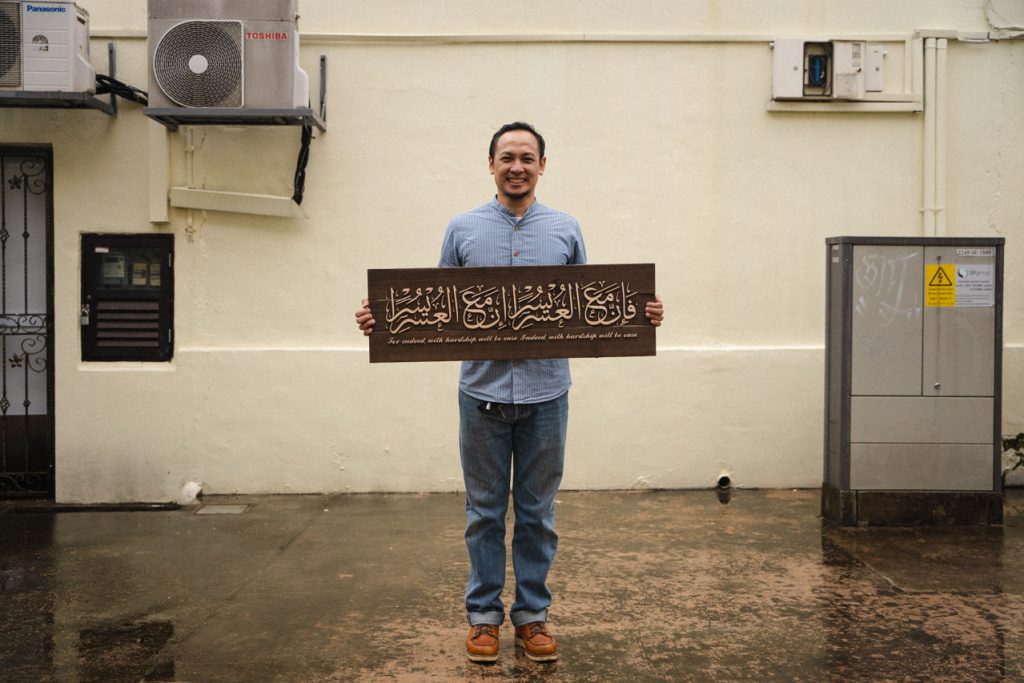
The DM that Hazrin received was a request to produce an artwork so the sender could place it in his home as well. Initially, he was apprehensive. Hazrin replied that this was his first time creating Islamic art—a mere side project that he had undertaken for his own home. But if the requester was willing to give him a chance, Hazrin was willing to do it.
As it turns out, Hazrin’s first client was so happy with the result that he commissioned Hazrin for another piece of artwork to hang in his children’s room, and another when he renovated his house, and another when he shifted to a new house.
“From a client to a friend… from that one piece, through word of mouth, things just fell into place,” Hazrin reflects. “After doing this for a year, I realised that I could do this full-time.”
Buoyed by the success of these side projects, Hazrin decided to leave his full-time job and started Haz Workz to focus on creating customised Islamic art for individual clients.
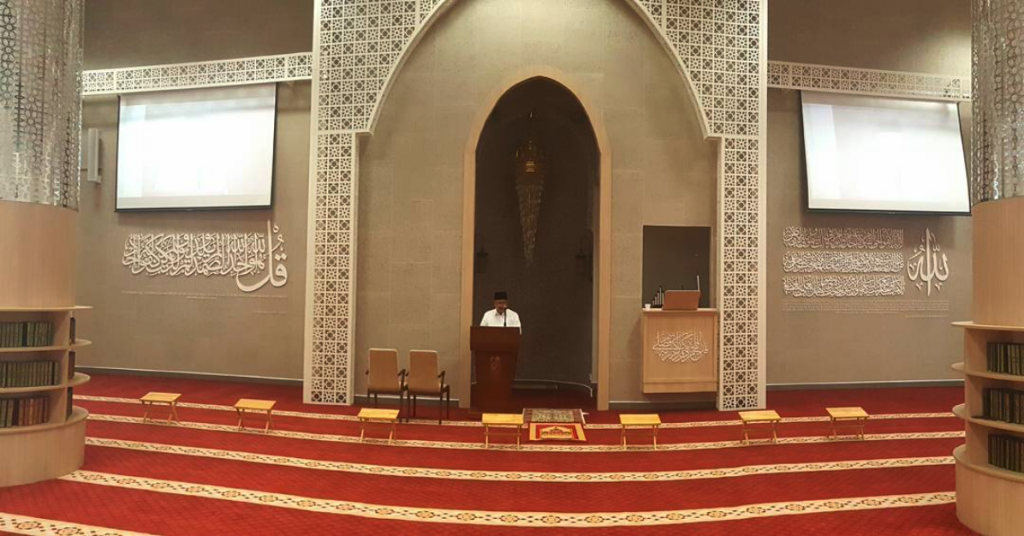
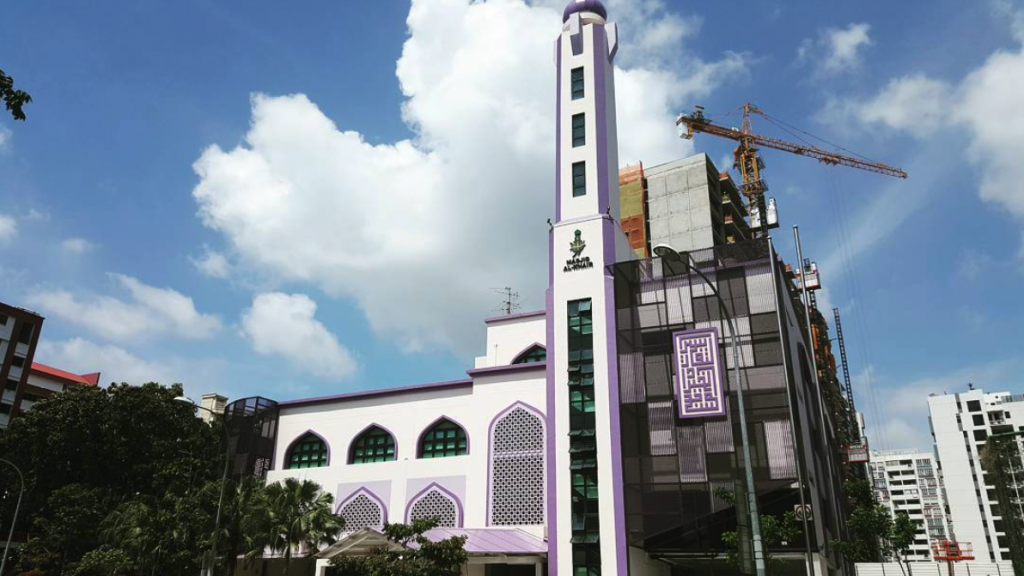
Eventually, word about Hazrin’s business spread so wide that he was commissioned to produce artwork for two mosques in Singapore. The newly refurbished Masjid Al-Falah, located in Orchard Road, wanted two artworks to be placed in its prayer hall. Al-Khair mosque at Choa Chu Kang wanted something even bigger: an enormous 2-by-4-metre outdoor installation adorning its façade.

The roots of Islamic calligraphy can be traced to the time of the third caliph, Uthman ibn Affan, who reigned from AD 644 to 656, Hazrin explains.
Islamic calligraphy arose much later, around the 8th century. It was followed by a ‘Golden Age of Arabic Calligraphy’, which saw a series of three masters—Ibn Muqla, Ibn al-Bawwab, and Yakut al-Musta’simi of Amasya—pushing the art form to greater heights. As each of the three master calligraphers lived in a different region of the Islamic world then, they incorporated different styles into their calligraphy, which is why there are regional variations in the Arabic script.
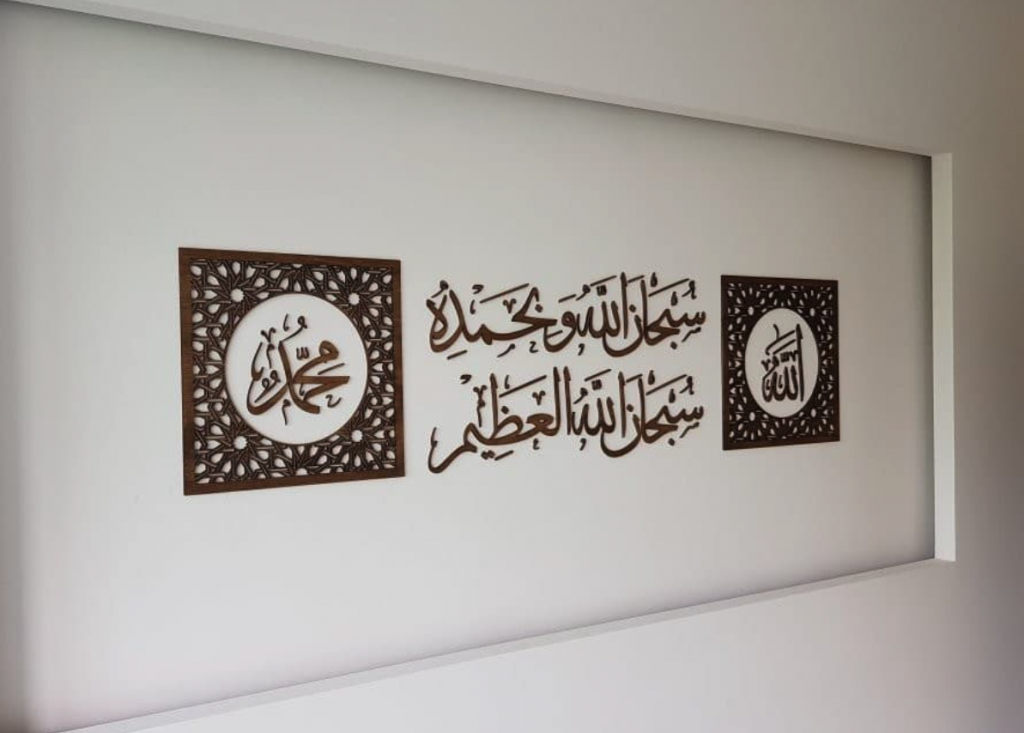
For example, Thuluth, characterised by a cursive and sophisticated script, is most common in Southeast Asia.

In India and Iran, the heavily stylised and sloping style called Diwani finds popularity.

There is one style that Hazrin’s clients frequently request because they like its angular, and almost architectural quality: kufi (also known as “kufic”). The kufi’s angular shape was influenced by the mixing of cultures on the Silk Road; the kufi murabba (a square Kufic pattern that inscribes a Quranic phrase or verse), particularly, was developed in China.
“When my clients want the kufi script, they will say, ‘I want the contemporary one.’ But it’s actually one of the oldest styles. When I go over to their homes, I will explain the history to them,” Hazrin grins, relishing the chance of reprising his old role as a teacher.

According to Hazrin, the practice of hanging artwork of verses at home arose because there are certain Quranic verses that Muslims are encouraged to read daily. For that reason, traditional Islamic artwork—such as those you can find at Arab Street or Tanjong Katong Complex—only feature certain verses, such as Ayatul Kursi (also known as The Throne Verse), the Syahadah (Declaration of Faith), or the Basmala.
Hazrin’s service, however, allows his clients to pick a particular verse that they treasure or find meaningful, or to customise the artwork to a very specific degree. Essentially, they can send Hazrin whatever text they want laid out and framed in a style, and even material, of their own choosing.
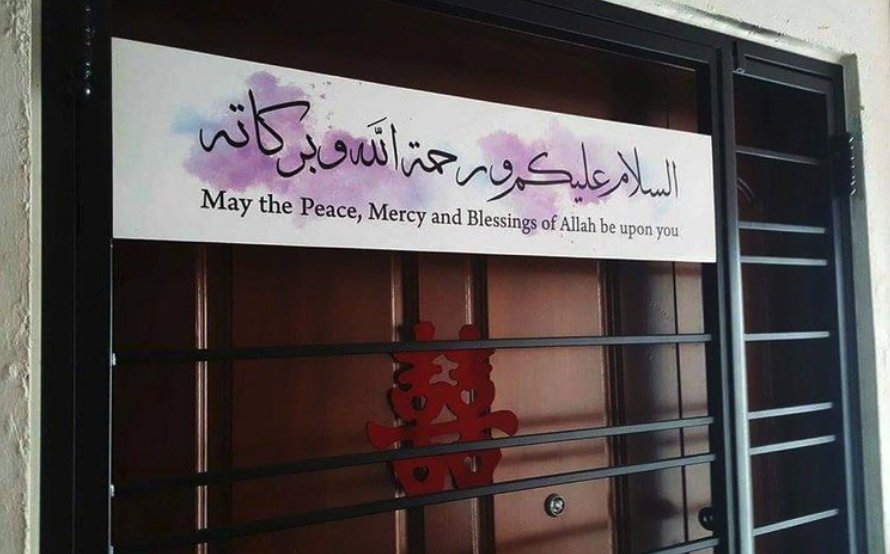
One trend that is growing increasingly popular is the inclusion of translation—such as in Malay or English—alongside the original Arabic script of the verse. The clients who order verses in this format are a growing base and tend to be from mixed-race families—which is itself a group rapidly increasing in Singapore. For instance, Hazrin recalls producing a piece with a Tamil translation for an Indian-Muslim family.
In other cases, young homeowners may opt to have an English translation of the Arabic text so that their non-Muslim friends who visit them can understand the meaning of the verse as well.

Then there are some custom requests that are just “unique”, Hazrin says, laughing.
“I had a client who was a Star Wars fan. He wanted the translation of a verse written in the Star Wars font. That one was a bit of a headache for me,” Hazrin chuckles.
Before agreeing to undertake the project, Hazrin decided to check with religious teachers if that request was permissible.
He recounts: “I asked religious teachers, ‘Can or not? Does it change the meaning?’
“They said, ‘If it’s just a font, then it’s okay la.’
“That’s how I ended up producing the Declaration of Faith in the Star Wars font.”
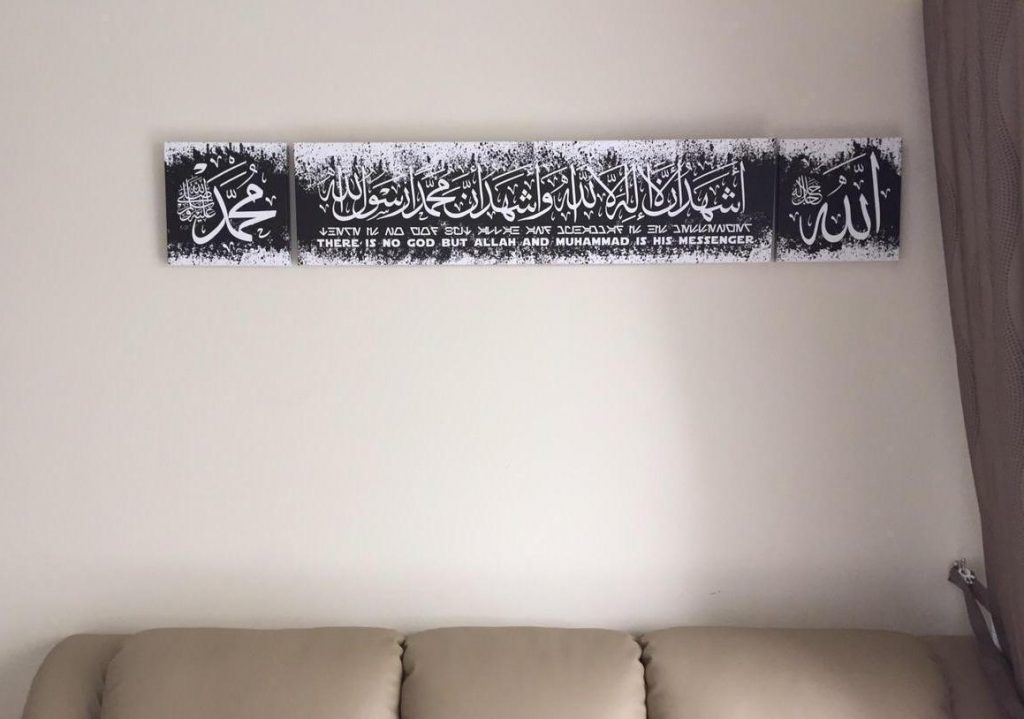
As much as Quranic verses are an important display of piety and are believed by some devotees to ward off evil, MUIS, in my correspondence with them, cautions against according them too much importance:
The fatwa Committee in 1989 is of the view that such verses may be hung in their houses, however one should affirm their faith that everything (goodness and prevention of evil) comes from God only, and not the verses/items.
Hazrin wholeheartedly concurs: “We don’t want to mislead the general public into thinking that the physical item is the one that protects them. The one that protects us is God. The verses that we read are only an intermediary.”
That said, the verses are from the Quran, so when Hazrin prepares the artwork, he treats them with respect. For example, he consciously avoids stepping over them or putting them on the floor. Hazrin also advises his clients to hang the artwork at a location where they will see it constantly.
“My stand has always been that the artwork should act as a reminder, not purely for aesthetics,” Hazrin affirms. “I always suggest an area where it’s the first and last thing they see when they come home or when they are leaving their home, so subconsciously, when they see it, they will read it.
“Other than that, there’s no real rule to it—the Quran touches people in different ways.”






